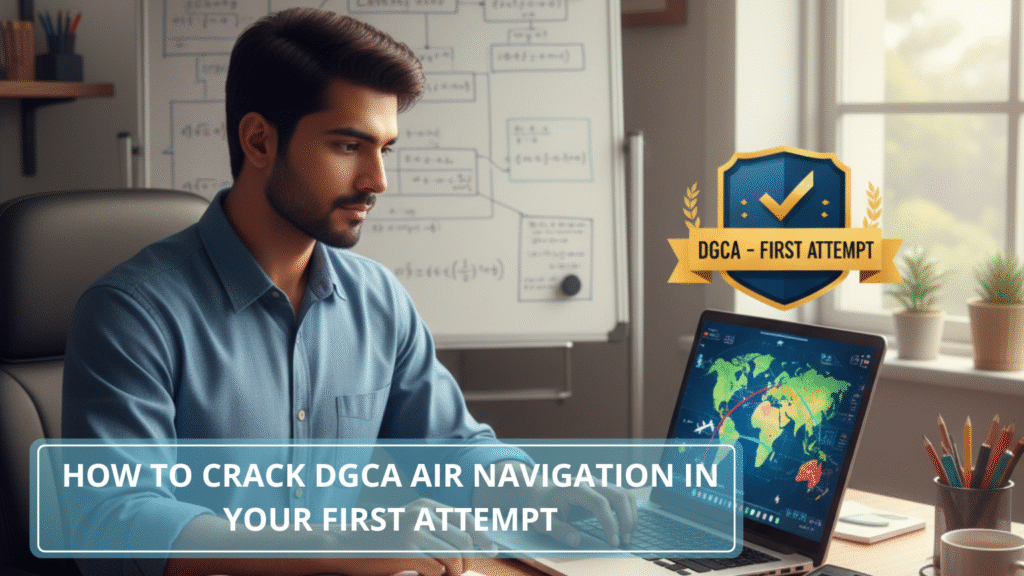How to Crack DGCA Air Navigation in Your First Attempt
If you’re a pilot trainee preparing for your DGCA exams, you already know that Air Navigation can feel like a tough nut to crack. It is not merely a theory—it is a combination of mathematical calculations, logical reasoning, and practical flying. However, the reality is that if you take the right path and stick to it, you can get Air Navigation cleared on your very first try.
This guide is going to tell you everything about the whole process—what to study, how to practice, and what mistakes to avoid.
Understanding the Air Navigation Paper
The DGCA Air Navigation paper examines your grasp of the aircraft in finding its way from point A to point B—in a precise, secure, and cost-effective manner. It assesses your theoretical knowledge and problem-solving abilities at the same time.
You can expect questions from:
- Great circle and rhumb line navigation
- Wind triangle and track calculation
- Time, distance, speed, and fuel problems
- Magnetic and compass variation
- Radio navigation (VOR, DME, ADF, GPS)
- Flight planning, charts, and altimetry
The pattern is objective (MCQ), and questions are designed to test how well you apply concepts rather than how well you memorize formulas. That’s where most first-time candidates go wrong—they study hard but not smart.
Step-by-Step Plan to Crack Air Navigation
Step 1: Know Your Syllabus Inside Out :-
Start by downloading the official DGCA syllabus from the Pariksha Portal. Highlight each topic and make a checklist. This will help you stay focused on exactly what’s needed instead of wasting time on irrelevant material.
Step 2: Choose the Right Study Material :-
The books you use can make or break your preparation. Stick to trusted resources like:
- R.K. Bali – Air Navigation (DGCA-specific and simplified for CPL students)
- Trevor Thom – Air Navigation (Vol. 3) for conceptual clarity
- Class notes or online DGCA-approved ground school notes
Keep your material limited but revise it repeatedly. The goal is not to read everything—but to master what matters.
Step 3: Build Strong Basics :-
Spend your first two weeks just understanding concepts.
Focus on:
- Earth’s geometry and great circles
- Conversion of units (degrees, minutes, nautical miles)
- Time zones and longitude differences
- The relationship between heading, course, track, and wind
If your fundamentals are shaky, every numerical problem will feel like a mountain. Make sure you can visualize how an aircraft moves relative to wind and Earth.
Step 4: Practice Navigation Numericals Daily :-
Air Navigation is a “skill subject.” The more you solve, the faster you get.
Create a daily habit of solving at least 15–20 questions from past papers or workbooks. Include:
- Wind triangle problems
- ETA (Estimated Time of Arrival) and ETE (Estimated Time Enroute)
- Compass and magnetic heading calculations
- Distance and speed conversions
Keep a notebook just for formulas and tricky sums. Revisit it every weekend.



